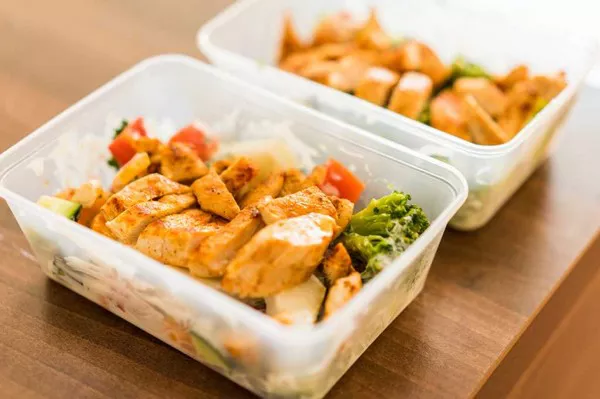In the quest for weight loss, finding the right balance between staying full and shedding pounds can be challenging. However, by incorporating specific foods into your diet, you can achieve satiety while promoting a healthy and effective weight loss journey. In this article, we will delve into six key items that can keep you feeling satisfied and aid in your weight loss goals.
Start with Fiber-Rich Vegetables
One of the foundational elements for staying full and losing weight is incorporating fiber-rich vegetables into your daily meals. Vegetables such as broccoli, spinach, and kale are not only low in calories but also high in fiber, promoting a sense of fullness. Fiber takes longer to digest, keeping you satisfied for an extended period.
a. Broccoli: Packed with fiber, vitamins, and minerals, broccoli is a versatile vegetable that can be steamed, roasted, or added to salads. A study published in the Journal of Nutrition indicates that a higher intake of cruciferous vegetables like broccoli is associated with a lower risk of weight gain over time.
b. Spinach: Low in calories and high in fiber, spinach is an excellent addition to your meals. Research published in the American Journal of Clinical Nutrition suggests that the thylakoids in spinach may reduce cravings and promote a feeling of fullness, aiding in weight management.
c. Kale: A nutrient powerhouse, kale is rich in fiber, vitamins, and antioxidants. According to a study in the journal Nutrients, increasing the consumption of leafy greens like kale can be linked to better weight management and overall health.
Lean Proteins for Sustained Fullness
Incorporating lean proteins into your diet is essential for both muscle maintenance and prolonged satiety. Protein-rich foods help regulate appetite, making you feel fuller for longer periods.
a. Chicken Breast: A lean source of protein, chicken breast is not only delicious but also effective in keeping you satiated. Studies have shown that a higher protein intake can contribute to weight loss by reducing overall calorie intake.
b. Fish: Fatty fish such as salmon and tuna are rich in omega-3 fatty acids and high-quality proteins. Research published in the International Journal of Obesity suggests that incorporating fish into a calorie-controlled diet may enhance weight loss and improve body composition.
c. Legumes: Beans, lentils, and chickpeas are excellent sources of plant-based protein and fiber. A meta-analysis in the journal Obesity Reviews indicates that including legumes in your diet can contribute to weight loss and improved weight maintenance.
Whole Grains for Sustained Energy
Opting for whole grains over refined carbohydrates is crucial for maintaining steady energy levels and feeling full throughout the day.
a. Quinoa: A complete protein source, quinoa is rich in fiber and nutrients. Research published in the European Journal of Nutrition suggests that including quinoa in your diet may contribute to better weight management and improved metabolic health.
b. Oats: High in soluble fiber, oats can help control appetite and support weight loss. A study in the Journal of the American College of Nutrition found that oatmeal consumption is associated with lower body weight and reduced body fat.
c. Brown Rice: A whole grain alternative to white rice, brown rice is higher in fiber and nutrients. According to a study in the International Journal of Preventive Medicine, incorporating brown rice into a weight loss plan may lead to more significant reductions in body weight and waist circumference.
Healthy Fats for Satiety
Contrary to the misconception that all fats should be avoided during weight loss, incorporating healthy fats into your diet can contribute to a feeling of fullness.
a. Avocado: Rich in monounsaturated fats, avocados provide a satisfying and creamy texture to meals. A study in the Nutrition Journal found that including avocados in a meal may reduce hunger and increase meal satisfaction.
b. Nuts and Seeds: Almonds, walnuts, chia seeds, and flaxseeds are packed with healthy fats, fiber, and protein. Research published in the American Journal of Clinical Nutrition suggests that nut consumption is associated with better weight management and reduced risk of obesity.
c. Olive Oil: A staple in the Mediterranean diet, olive oil is a source of monounsaturated fats. Studies, such as one in the Journal of Women’s Health, have shown that incorporating olive oil into a weight loss plan can lead to improved adherence and long-term success.
In conclusion, achieving weight loss while staying full involves a holistic approach to nutrition. By incorporating fiber-rich vegetables, lean proteins, whole grains, and healthy fats into your diet, you can create a sustainable and satisfying eating plan.
Related Links:
What to Eat Late Night for Weight Loss
What should i eat to lose weight in 30 days
What Can I Eat to Burn Fat and Accelerate Your Weight Loss


